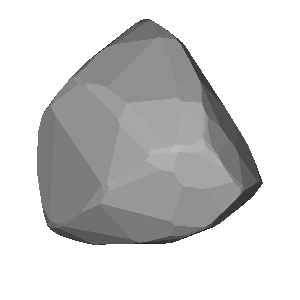2002-03-09 / TYC 1898-00944-1 / (1107) Lictoria
| # | OBS | Observer | Occ | Meth. | Instr. | CC | TSRC | UT1 | UT2 | UT3 | UT4 | UT2E | UT3E | Dur. | Chrd |
|---|---|---|---|---|---|---|---|---|---|---|---|---|---|---|---|
| 1 | show | Milos Sochan | O+ | VIS | L135 | SK | RAD | 19:06:00 | 19:06:40.44 | 19:06:53.55 | 19:07:00 | 0.6 | 0.3 | 13.11 | 80.0 |
| 2 | show | L. Hric et al | O+ | PHM | M600 | SK | GPS | 19:02:32 | 19:06:23.4 | 19:06:39.7 | 19:08:07 | 0.1 | 0.1 | 16.30 | 99.4 |
| 3 | show | Rui Goncalves | O- | CCD | M254 | PT | |||||||||
| 4 | show | Jean Montanne | O- | CCD | M203 | FR | 19:00:00 | 19:04:00 | |||||||
| 5 | show | Paul Pinel | O- | VIS | M200 | FR | 18:55:00 | 19:10:00 | |||||||
| 6 | show | Sandor Szabo | O- | VIS | M340 | HU | 19:01:10 | 19:10:00 | |||||||
| 7 | show | Wolfgang Vollmann | O- | VIS | L130 | AT | 19:04:55 | 19:09:20 | |||||||
| 8 | show | Michael Gruenanger | O- | VIS | M200 | AT | 19:00:00 | 19:10:00 | |||||||
| 9 | show | Jaroslav Vana | O- | VIS | L150 | SK | 18:51:00 | 19:16:00 | |||||||
| 10 | show | Jan Masiar | O- | VIS | L200 | SK | 19:03:00 | 19:09:00 | |||||||
| 11 | show | Wilhelm Dziura | O- | VIS | M200 | PL | 18:57:00 | 19:17:00 |
11 observations found in db: euraster
Available (probably) matching predictions (click on the link to switch):| JPL#67 : eebcbbd1-0363-431f-b896-0dd878cc0dd8 [db: observed] |
Using prediction eebcbbd1-0363-431f-b896-0dd878cc0dd8 for map and profile fit
| Ellipse and circular profile fits to the timings (chords) |
|---|
|
|
Auto-Fit Result: X0,Y0 = 458.1, 76.4 km Circular diameter = 99 km From 2 chords (PHM,VIS) You can enter space separated chord numbers (example: 11 4 8) or a method like VIS to ignore all visual timings, or a time source like RAD and NTP (but not GPS). If the plot disappears, then there are less than 2 chords left (too much ignored, go back with browser). Check SiMDA for size and mass data. Check Johnston Archive for satellites. |
Sky projection (artificial light) for occ. time: 2002-03-09, 19:06 UT (JD = 2452343.296)
| DAMIT | Q | P (h) | λ, β | JD0 | JD-JD0 | φ0 | Version | Modified | Vol-equiv D | Cmnt |
|---|---|---|---|---|---|---|---|---|---|---|
| # 3135 | 1.0 | 8.561 | 282°, 64° | 2.450895e6 | 1448.3 | 0.0° | None | 2019-09-26 | not scaled | 2019-05-07 |
| # 3136 | 1.0 | 8.561 | 96°, 52° | 2.450895e6 | 1448.3 | 0.0° | None | 2019-09-26 | not scaled | 2019-05-07 |


Image size: 300px. Transparent image background for copy & paste
| Map with groundtrack and observer stations |
|---|
| Event Details |
|---|
Occultation UUID [and DB] : eebcbbd1-0363-431f-b896-0dd878cc0dd8 [observed] Occultation Date + Time : 2002-03-09 at 19:03:01 UT +/- 0.11 min [1] Object Designation : (1107) Lictoria Orbit Class : MBA Star Designation : GDR3 3381291210838105344 Star Coordinates (ICRF) : RA = 06 52 21.4394, DE = +24 26 36.929 [2] Star Magnitudes : G = 11.55 mag, RP = 11.14 mag, BP = 11.79 mag Object Magnitude : V = 14.54 mag Estimated Magnitude Drop : 3.1 mag Estimated Max. Duration : 13.0 sec Object Mean Diameter : 79 km (src: astorb) Speed of the shadow : 6.1 km/s Elongation to Moon & Sun : 160° (sunlit = 16%), Sun = 113° Cross-track uncertainty : 1.0 mas = 1 km = 0.02 path-width (1-sig) RUWE and duplicate source : 1.03 mas, dup.src = 0 (0:false, 1:true) Ephemeris Reference : JPL#67 [1] time t0 of closest geocentric approach c/a, [2] including proper motion until t0 |
| More Data and Informations |
|---|
(If error 404: link not valid which means no data available)
| Aladin Sky Atlas |
|---|
| Aladin Lite direct link (has Gaia overlay) |